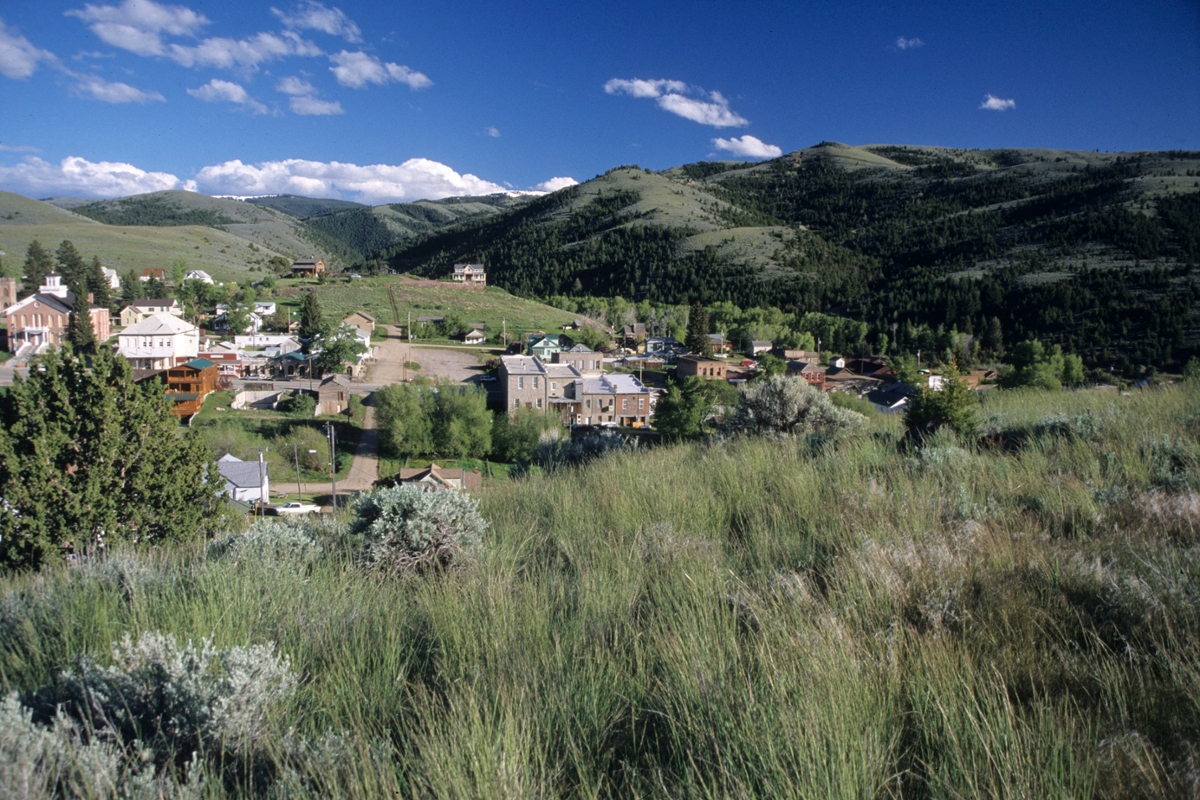Montana Followed Meandering Path Toward Statehood (Part 2 of 2)
 The view from Boot Hill, Virginia City (Photo by Rick and Susie Graetz)
The view from Boot Hill, Virginia City (Photo by Rick and Susie Graetz)
Arriving in Washington, D.C., Judge Sidney Edgerton consulted with President Lincoln and found him agreeable to the idea of a new territory in the Rockies. More important, Edgerton discovered that his friend and fellow Ohioan, Congressman James M. Ashley, had already begun work on a bill to form the new territory. Ashley, who chaired the House Committee on Territories, had the power to make his wishes felt. His political muscle and reports of the area's wealth of gold, which Edgerton reported as influential “in such a mercenary age as ours,” pushed the bill speedily through Congress.
While the bill lay in committee, Edgerton and his allies broke with the Idaho legislature by maneuvering the new territory’s northwestern boundary three degrees to the west. This meant that the Idaho-Montana territorial line would generally follow the Bitterroot summits northward to the U.S.-Canada boundary and Montana would take a 130-mile-wide bite out of northern Idaho. In this manner, Idaho lost the Flathead, upper Clark Fork and middle Kootenai valleys to its new neighbor. The arrangement reduced the width of northern Idaho by three-fourths, leaving it an awkward “panhandle,” cut off from the southern portion of the territory by the rugged Salmon River Mountains. Idaho petitioned Congress to restore these “stolen” lands, but with no success. The Lewiston area even advocated establishing another territory named Columbia, which would join today’s western Montana, northern Idaho and eastern Washington, but the plan got nowhere. So, by circumstance and scheming, the new territory emerged with its jagged western border.
Congress, preoccupied with the Civil War, devoted little time to the matter of founding another western commonwealth. The one serious threat to passage of the bill arose when the Senate voted to force the new territory to give the vote to African Americans. Even though there were few blacks in the Northern Rockies, this explosive issue caused a deadlock with the House of Representatives. The two houses of Congress finally compromised by restricting the vote to citizens of the United States, thus leaving the newly freed African Americans without a guarantee of the ballot on the distant mining frontier.
The House and Senate also debated the name that Congressman Ashley had placed on his creation. “Montana,” from the Latin or Spanish adjective meaning “mountainous,” first appeared as a place name in 1858, when Josiah Hinman gave the name to a small mining town near Pike’s Peak. Gov. James William Denver of Kansas Territory remembered the name and suggested it to Sen. Stephen A. Douglas as a name for a future territory in the Rockies. Ashley picked the name up from Douglas or somewhere else and liked it enormously. After trying unsuccessfully to give the name to what became Idaho in 1863, Ashley determined to apply it to Idaho’s new neighbor.
When Ashley’s Montana bill reached the floor of the House, the Democrats began harassing the Republican about the name. The Democrats suggested dropping it and substituting the title “Jefferson” to honor the founder of the Democratic party or even “Douglas” to commemorate the prominent Democratic senator from Illinois. Ashley and the Republicans would have none of it. Congressman Jacob Cox of Ohio suggested “Shoshone,” but the name was scuttled when the Colorado delegate pointed out that Shoshone meant "Snake," a word that had unfortunate implications during the Civil War, when pro-Confederates from the North were called “Copperheads.” The debate reached the point of true absurdity when Representative Elihu B. Washburn of Wisconsin suggested the name “Abyssinia,” taunting the Republicans about their fondness for African Americans.
Although Ashley won his battle in the House, two weeks later the Senate again challenged the name “Montana.” Again, several members believed the classical name was inappropriate and argued that an Indian word would be better. But no one could suggest a name with any relevance to the place, so they too settled on Ashley’s title, but only after this illuminating exchange:
MR. HOWARD: I was equally puzzled when I saw the name in the bill.... I was obliged to turn to my old Latin dictionary.... It is a very classical word, pure Latin. It means a mountainous region, a mountainous country.
MR. WADE: Then the name is well adapted to the territory.
MR. HOWARD: You will find that it is used by Livy and some of the other Latin historians, which is no small praise.
MR. WADE: I do not care anything about the name. If there was none in Latin or in Indian, I suppose we have a right to make a name; certainly just as good a right to make it as anybody else. It is a good enough name.
Montana it became, and Montana it has remained. Following approval by Congress, President Lincoln signed into law the bill creating Montana Territory on May 26, 1864.
From “Montana A History of Two Centuries” by Michael P. Malone, Richard R. Roeder and William L. Lang. Printed by permission of the University of Washington Press
